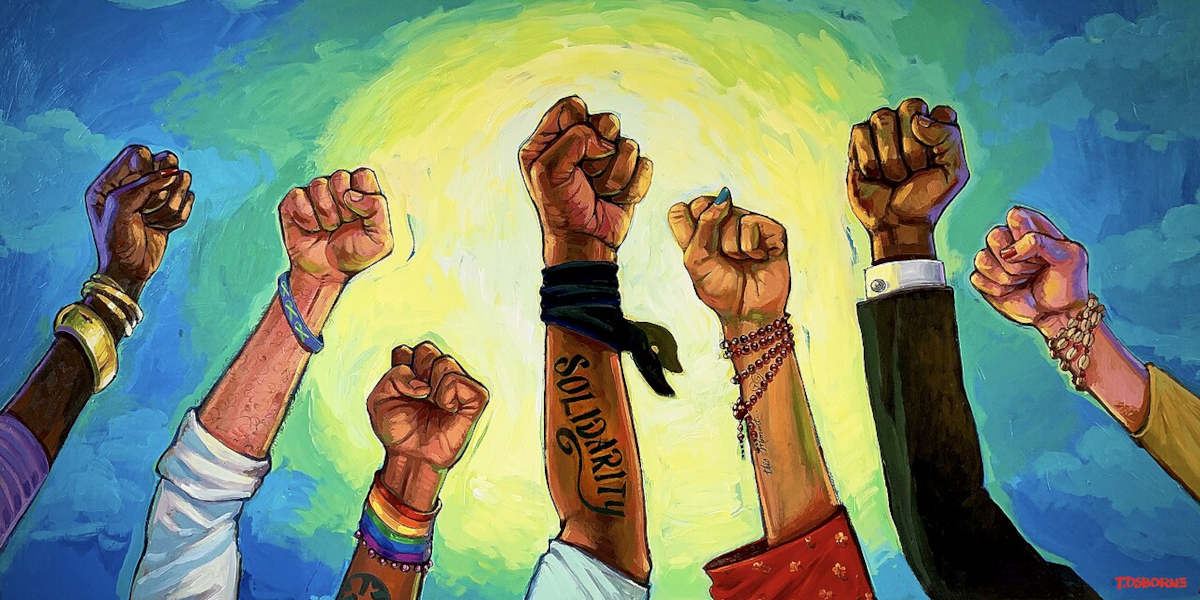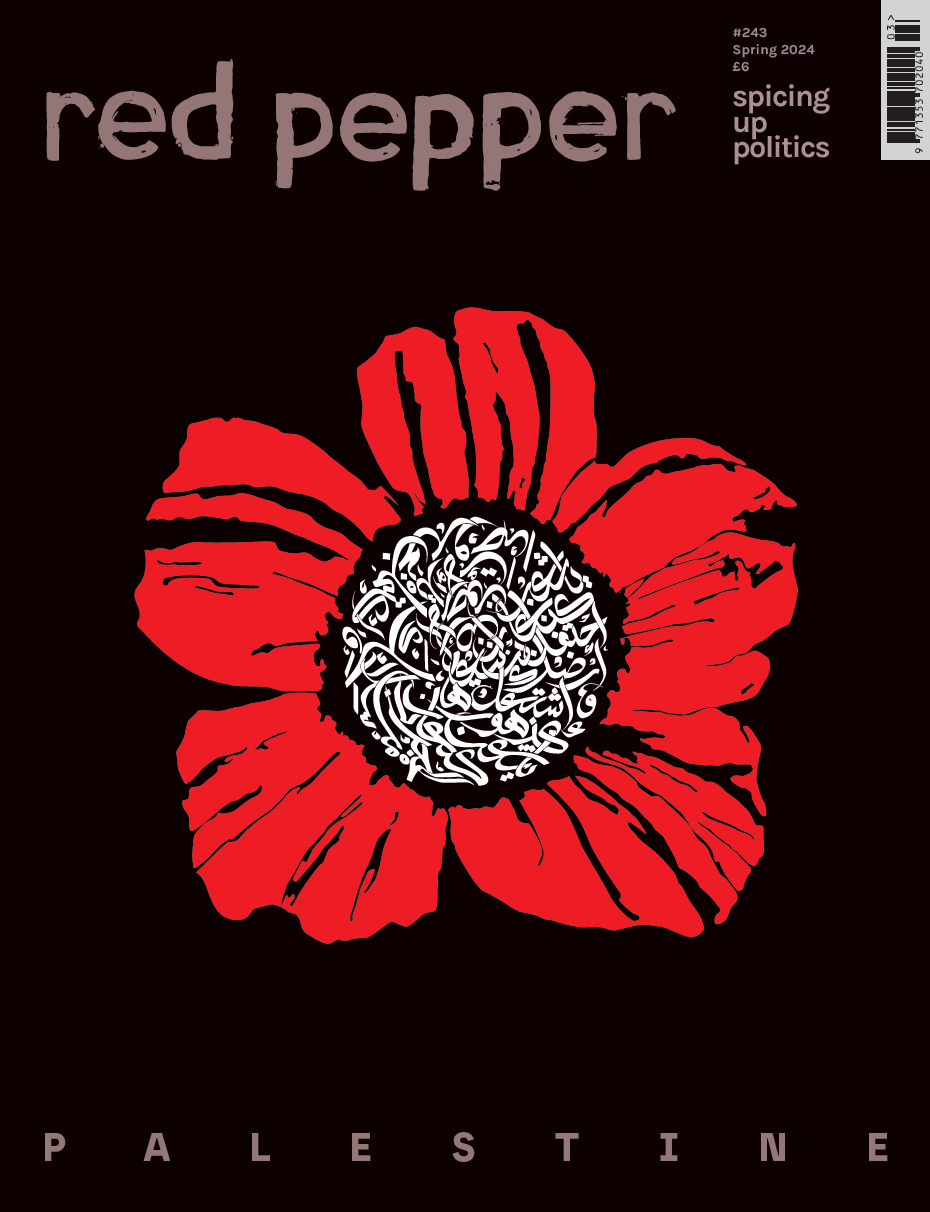Title: Mutual Aid: Building Solidarity During This Crisis (and the Next)
Author: Dean Spade
Publisher: Verso
Year: 2020
First published during the COVID-19 pandemic, Dean Spade’s pocket-sized book on mutual aid, detailing its opportunities and pitfalls, is only likely to become more necessary.
The ‘next’ crisis of the book’s title points to an entanglement of ever-increasing, ever-present dangers. We face a confluence of climate change and environmental breakdown, wealth inequality, austerity, housing crises, the rise of the far right, and the imposition of harsher policies towards migrants, LGBTQI+ communities and political protesters – each likely to be amplified, in ways that we may not have yet considered, by the intensifying effects of AI.
This reality can feel overwhelming, even paralysing. Revisiting Spade’s book in this context feels urgent for exploring what the left can learn from the often bold and innovative approaches of mutual aid. Rather than relying upon the state, given the failures of the present Labour government to replenish the welfare system, mutual aid offers a means by which the working class can develop greater autonomy.
Survival of the cooperative
Mutual aid is more than the provisioning of services, it is a way of being based upon reciprocity: bring what you can, take what you need. Mutual aid has a long history. Indigenous communities have always organised around cooperative interdependency. Russian naturalist and anarchist philosopher, Peter Kropotkin – author of Mutual Aid: A Factor of Evolution, published in 1902 – believed that voluntary cooperation and reciprocity is integral to human evolution; a position that challenged Darwin’s assertion that natural selection, based on the survival of the fittest, is driven by the struggle of individuals to compete for resources.
In the context of contemporary capitalism – and in the sense that Spade uses the term – mutual aid is an inherently radical approach to crisis work, since it targets the root of the problems (‘radical’ from the Latin radix, or ‘root’).
Dean’s formulation of mutual aid begins with the premise that the prevailing political and economic system creates harm and that some people benefit from the system at the expense of others who suffer.
For me, most useful have been strategies for decision-making, pre-empting group conflicts and burnout, with advice on how to address them in non-threatening ways when they do arise
Mutual aid practices are most often encountered during a crisis, at the fore of what Spade refers to as ‘survival work’; to meet ‘people’s survival needs right now’. Communities come together in collective action for the provision of food, health care, shelter, furniture, household items and advocacy, or help with IT skills, or with mending tools or clothes.
Less obvious is that for this ‘survival work’ to be an effective mutual aid strategy, as part of the struggle for justice, it must be founded on a shared understanding that crisis is the result of systemic processes. As Spade states, ‘a political analysis of the conditions that produced your crisis … helps to break stigma, shame and isolation’.
Indeed, the defining characteristic of mutual aid (as distinct from other kinds of community work, charity work or campaigning) is when ‘survival work’ takes place in ‘conjunction with social movements demanding transformation’.
Solidarities of scale
Concerning the potential to scale-up groups to maximise impact, Spade argues that smaller scale groups thrive on cohesion and support, harnessing local knowledge and tailored to the specific needs of the given community. For wider impact, groups can connect as part of a networked solidarity economy. Such prefigurative initiatives can later be mobilised for a different situation and towards building a different kind of society. This potentiality reminds me of the 2013 uprising in Gezi Park, Istanbul, when many disparate activist and community groups came together in an apparently spontaneous surge of collective power. Spade believes that mutual aid has a ‘particularly important role to play’ now and in the future because these manifold crises offer unprecedented ‘opportunities for mobilization’.
For Spade, mutual aid sustains struggles through building resilience in community and is the tactic that ‘most successfully helps us to grow our movements’. Its track record is encouraging, and Spade is right to claim that ‘social movements that have built power and won major change have all included mutual aid’.
The Black Panthers – with their program of free breakfasts, medical clinics and ambulances, help for the vulnerable, and a comprehensive education package founded on political analysis and a liberation curriculum – are just one iconic and notable example. In the UK, the United Black Women’s Action Group spearheaded feminist housing activism during the 1970s and 80s; in the 2020s, initiatives such as Cooperation Hull emulate Cooperation Jackson in the US.
Practical action
Despite its size, Mutual Aid packs an impressive range of resources. It offers straightforward advice whilst mindful of the potential complexities of a given situation, with suggestions of how to navigate challenges. Spade aims to enable people to take the necessary steps, based on shared political goals, that will result in doing mutual aid well – ultimately, to maximise the chances of winning the fight against systemic crisis.
Understanding the principles in theory and putting them into practice are, however, different things. In my own experience, practicing mutual aid is not necessarily as easy as Spade can suggest. Working with other people – with their myriad hopes and priorities, different experiences, talents and rough edges – can be challenging. Spade’s safety-net of a book presents arguments and real-life experiences that can help us avoid many potential pitfalls and guide us through difficulties. For me, most useful have been strategies for decision-making, pre-empting group conflicts and burnout, with advice on how to address them in non-threatening ways when they do arise.
I agree fully with Spade’s conclusion that, given the ‘devastating conditions unfolding everyday’, there are two primary tasks ahead of us: to organise resilience work; and to mobilise ‘hundreds of millions of people’ to confront the systemic causes of the crises. In short, the left will need to ‘create mutual aid projects and get lots of people to participate in them’. This task won’t be easy and the stakes are high. Activist spaces can be difficult. If we are going to resist effectively, fight back and build the world we want to live in, it will take experience and practice.
Mutual Aid will be essential reading along the way. Its arguments are robust and thoroughly underpinned by experience. The examples – though often grounded in the US context – invariably illuminate. Its power lies in helping us to imagine how to organise in a community to build resilience, even with the enormity of the crises we face. Foregrounding systemic injustice can be liberating – motivating people to take collective action to ease suffering, challenge injustice and improve lives. From that grounding, mutual aid has the potential to produce new ways of living and is vital in our struggles to achieve the just future that we all want. There is no time to lose.










